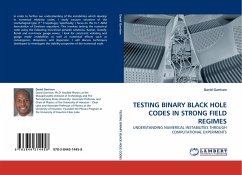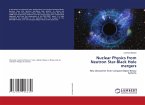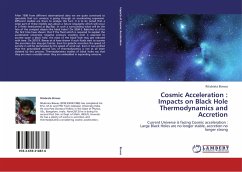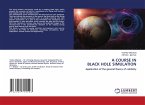Some galaxies have violent activities at their nucleus (AGN). The dominant model is a super massive Black Hole surrounded by a bright accretion disk and a dust ring. I have for the first time identified periodic variations in an AGN, AP Lib. The periods in days are 954 (orbit), 45 (prec. of B-comp.), 3.2 (inner disk edge) and 3.1 (jet spin). The central object is a Black Hole with mass 1.26 billion Msun surrounded by an accretion disk seen at an inclination of 77º.1. A Black Hole with a mass of about 5% of the central object moves in an orbit with period 954 days at a distance of 1900 AU. The inclination of the orbital plane is 87º. In the same orbit there are three clouds at the Lagrange points L3, L4 and L5. These eclipse the bright accretion disk and causes three minima. Gravitational lens effects are also observed. A model for the light emitted from the accretion disk around the Kerr Black Hole, by Kip Thorne, has been used to estimate the distance by comparison with the fluxreceived at the Earth. The three clouds prevent a homogenous inflow of matter to the accretion disk and after correction the distance = 0.70 billion light years and the Hubble parameter = 67.3 km/s/Mpc.
Bitte wählen Sie Ihr Anliegen aus.
Rechnungen
Retourenschein anfordern
Bestellstatus
Storno








